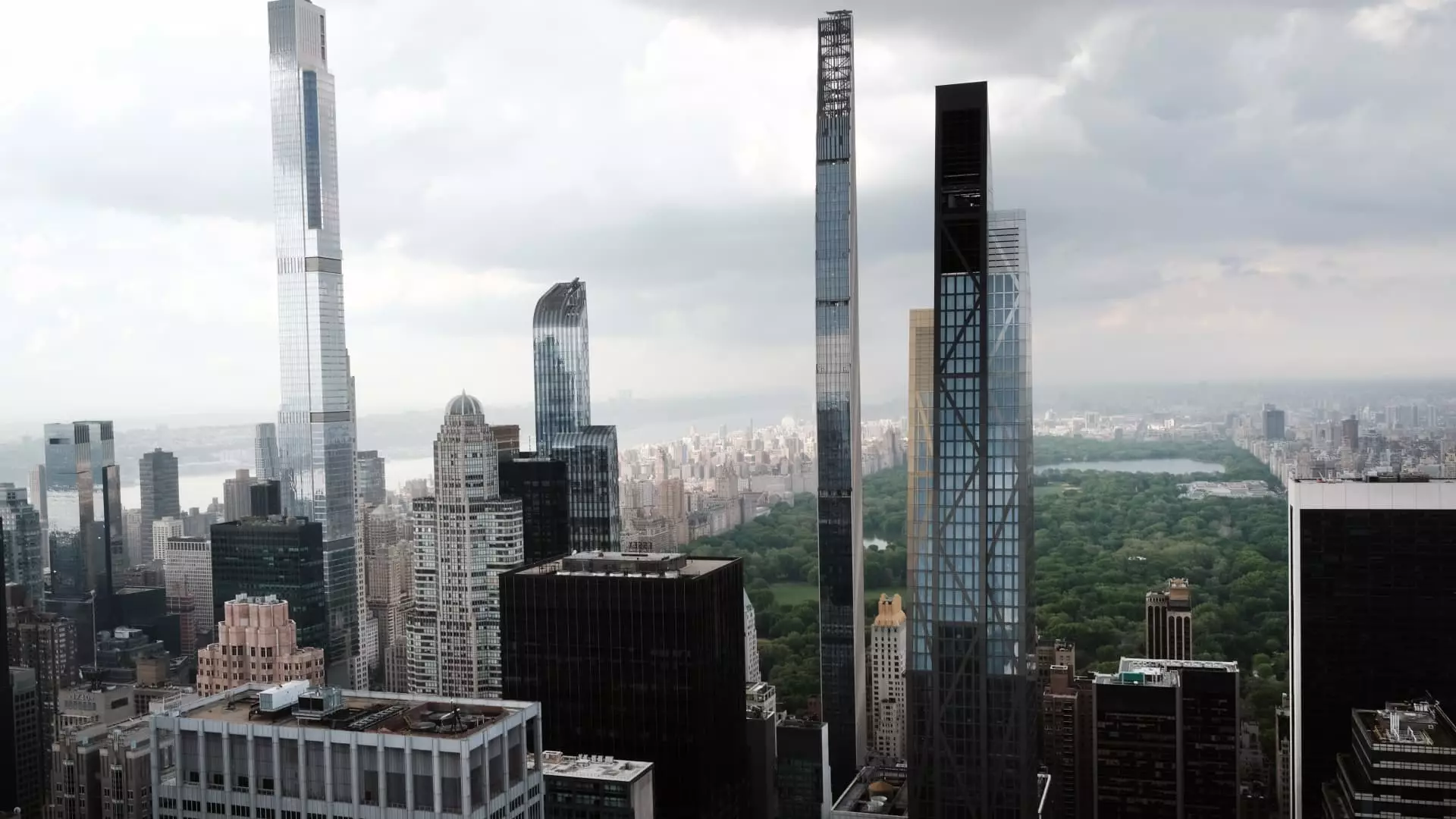In a dramatic shift that epitomizes the compelling nature of economic resilience, Manhattan’s luxury real estate market has reported an astounding 29% increase in apartment sales during the first quarter compared to a year prior. This remarkable growth is not merely about numbers; it’s a vivid illustration of how high-net-worth individuals are pivoting towards tangible investments amid financial instability marked by stock market volatility. With 2,560 closed sales, up from 1,988 last year, totaling a staggering $5.7 billion—an eye-popping 56% increase—it’s critical to dissect what this surge signifies, particularly in the context of America’s shifting economic landscape.
The Luxury Segment: Unyielding Confidence and Cash Purchases
Luxury real estate, defined as properties priced over $5 million, has been the pillar of this newfound strength. Sales for ultra-high-end apartments, priced at $20 million or more, have hit their highest peak for a first quarter since 2019. This sector, often insulated from broader economic fluctuations, thrives mainly on cash transactions. According to reports, over 58% of sales in Manhattan’s luxury segment were all-cash deals, revealing a striking 90% for apartments above $3 million. This reality highlights not only the enduring allure of Manhattan real estate for the ultra-wealthy but also a critical shift in investment strategy among affluent buyers seeking stable, hard assets over volatile stocks and bonds.
Macro Forces: Shaping Trends and Buyer’s Behavior
Brokers assert that several macroeconomic factors are shaping this trend. The uncertainty surrounding the stock market makes real estate in prime wealth markets—such as Manhattan—far more enticing. Add to that the strategic back-to-office mandates from banks and corporations, and it becomes clear that there is a rejuvenation in the desirability of city living. This “boomerang wealthy,” who fled to more laid-back environments like Florida during the pandemic, now find themselves returning to the vibrant pulse of New York City. Alongside this trend is the emergence of what many call the “Great Wealth Transfer,” as Baby Boomers begin to pass significant assets onto their children. This transition is significantly boosting transactions, with younger generations utilizing wealth held in trusts and family offices.
The Mid-Market: A Struggling Segment
Interestingly, not all segments of Manhattan’s real estate market are flourishing equally. The mid-market, particularly properties priced between $1 million and $3 million, has experienced a 10% decline in signed contracts. This trend raises questions about buyer preference shifting distinctly towards either high-end investments or more affordable options, with properties priced below $1 million performing better. The contrast between these segments clarifies that while luxury buyers are insulated from economic pressures, those in the mid-market are feeling the pinch, potentially sidelined by rising borrowing costs and economic uncertainty.
Looking Ahead: Signs of Future Growth
Despite the lackluster performance in earlier quarters, the first quarter of 2025 appears optimistic. Notably, signed contracts in March showed remarkable strength, particularly for apartments priced over $10 million, which tripled in contracts. This suggests an impending ripple effect on future sales. Real estate experts assert that the historical averages over the past decade won’t serve as reliable indicators in this renewed landscape. The trend signifies that the appetite for luxury real estate remains strong, revealing a fundamental confidence among buyers. The optimism reflected in market activity could mean Manhattan’s luxury segment is not just surviving the turbulence but thriving within it.
Implications for Investors and Buyers
For investors looking to navigate the complexities of the current market, the dynamics in Manhattan present compelling opportunities. The sheer weight of cash transactions indicates robust confidence among affluent buyers, making this an attractive time for new investments. Additionally, the ongoing trend of the “boomerang wealthy” suggests that there will likely be increasing demand in the near future, particularly if corporate mandates keep pulling executives back to the center of financial power that is Manhattan.
The conclusion is clear; a combination of strategic shifts in investment preferences, macroeconomic factors, and generational wealth transfer is propelling Manhattan’s luxury real estate market into new heights, reinforcing that in a world of economic uncertainty, the allure of tangible assets remains undeniably powerful.

